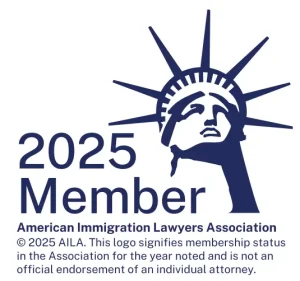Getting a Request for Evidence (RFE) from USCIS can feel like a punch to the gut. After months of waiting and hoping, instead of an approval, you receive a thick envelope demanding more documentation. The good news? Many RFEs can be successfully addressed. The challenging news? Some reveal problems that cannot be fixed, and knowing the difference requires experience.
After 28+ years practicing immigration law in Montana, I’ve seen every type of RFE imaginable. Some clients come to me panicked about requests that are straightforward to resolve. Others arrive with RFEs that indicate fundamental problems with their cases. Understanding which category your RFE falls into can save you time, money, and heartache.
What Is an RFE and Why Did You Receive One?
A Request for Evidence is USCIS’s way of asking for additional information or documentation before they can make a decision on your case. Think of it as the immigration equivalent of an incomplete grade in school—you have the opportunity to provide what’s missing and potentially succeed.
USCIS issues RFEs for several reasons:
Missing Documentation: You didn’t submit required supporting documents, or the copies were illegible.
Insufficient Evidence: What you submitted doesn’t fully prove your eligibility for the benefit you’re seeking.
Credibility Concerns: USCIS has questions about the authenticity of your relationship, employment, or other claimed circumstances.
Policy Changes: Immigration policies shifted after you filed, requiring additional evidence under new standards.
Officer Unfamiliarity: Sometimes officers request evidence that isn’t actually required, often due to unfamiliarity with less common case types.
The Three Categories of RFEs: Fixable, Challenging, and Fatal
Through decades of practice, I’ve learned that RFEs generally fall into three categories, each requiring different strategies:
Category 1: Easily Fixable RFEs
These are the best-case scenarios. You receive an RFE because:
- You forgot to include a document
- A document expired after filing
- USCIS needs updated information (like a new medical exam)
- Translation issues need correction
Example: A family-based green card applicant receives an RFE because their medical examination expired during the long wait time. Solution: Schedule a new medical exam with a USCIS-approved civil surgeon.
Category 2: Challenging but Addressable RFEs
These require more work but can often be resolved with the right approach:
- Proving the legitimacy of a marriage when USCIS has credibility concerns
- Demonstrating job requirements for employment-based cases
- Addressing gaps in documentation for cases with complex timelines
Example: USCIS questions whether a marriage is legitimate, requesting extensive additional evidence of the relationship. With careful preparation of joint documentation, witness statements, and a strong legal argument, these cases can succeed.
Category 3: Fatal RFEs
Unfortunately, some RFEs reveal problems that cannot be fixed within the current application:
- Fundamental ineligibility for the benefit sought
- Criminal history that wasn’t properly addressed initially
- Fraud or misrepresentation issues
- Missing statutory requirements that cannot be met
Example: An employment-based applicant receives an RFE revealing that their employer never actually offered them the position described in the petition. This typically requires starting over with a new case.
The Hidden Costs of DIY RFE Responses
Many people attempt to respond to RFEs themselves, thinking they can save money. While this sometimes works for Category 1 RFEs, it often backfires for more complex issues. Here’s what I’ve observed:
Time Pressure: RFEs typically give you87 days to respond. Researching requirements, gathering documents, and preparing responses takes longer than most people expect.
Overcomplicated Responses: Anxious applicants often submit massive amounts of irrelevant documentation, which can actually hurt their cases by raising new questions.
Missing the Real Issue: RFE language can be confusing. Sometimes what USCIS is really asking for isn’t what it appears to be asking for on the surface.
One Shot Rule: If USCIS isn’t satisfied with your RFE response, they will typically deny your case. There’s rarely a second chance to get it right.
Our RFE Analysis and Response Service
After years of helping clients navigate RFEs, I’ve developed a systematic approach to evaluating and responding to these requests:
Step 1: Comprehensive RFE Analysis
I review your RFE alongside your entire case file to understand:
- What USCIS is actually asking for (not just what they appear to be asking for)
- Whether the request is legally justified
- What category your RFE falls into
- Your realistic chances of success
Step 2: Honest Assessment
I provide you with a written analysis that includes:
- Whether your RFE can be successfully addressed
- If problems exist that make success unlikely
- Whether starting over with a new application might be better
- Estimated costs for professional response versus DIY approach
Step 3: Strategic Response (If We Proceed)
For RFEs we can address:
- Careful documentation gathering that directly responds to USCIS concerns
- Legal arguments when USCIS requests aren’t properly justified
- Professional presentation that addresses the real issues without creating new problems
- Follow-up strategies if additional requests arise
When to Seek Professional Help vs. Going It Alone
Consider professional help if:
- Your RFE is longer than two pages
- USCIS is questioning the legitimacy of your marriage, employment, or other relationships
- You don’t understand what USCIS is asking for
- You’ve already made mistakes in your original application
- The consequences of denial would be severe (deportation, family separation, etc.)
You might handle it yourself if:
- The RFE asks for simple, straightforward documents you have
- You understand exactly what’s being requested
- You have time to research requirements thoroughly
- The issue is clearly just missing paperwork
Real Examples from My Practice (Details Changed for Privacy)
Success Story: A client received a 12-page RFE questioning their marriage, demanding extensive evidence of joint life. We gathered financial records, lease agreements, insurance policies, and witness statements. We also prepared a detailed legal brief explaining why their case met all statutory requirements. Result: Green card approved.
Honest Assessment: A client came with an employment-based RFE revealing that their employer had never properly posted the required labor certification notice. The timing requirements couldn’t be met retroactively. We advised starting over with proper procedures rather than wasting money on an impossible response.
Quick Fix: A client panicked over a two-paragraph RFE requesting updated tax transcripts. We explained this was routine, helped them request the documents from the IRS, and submitted a simple response. Total cost: fraction of what a full RFE response would have required.
The Montana Advantage: Personalized Service in Immigration Law
Immigration law is federal, but the service you receive is local. When you work with our firm:
- Direct attorney involvement: I personally review every RFE, not a paralegal or junior associate
- 28+ years of experience: I’ve seen virtually every type of RFE and know which arguments work with different USCIS offices
- Honest assessments: I’ll tell you if your case can’t be fixed rather than take your money for impossible situations
- Flat fee pricing: For most RFE responses, you’ll know the cost upfront
- Montana accessibility: You can reach me directly, not navigate through multiple layers of staff
Understanding USCIS Timing and Deadlines
RFE responses are typically due within 87 days of the date on the RFE notice. However:
- Mail time matters: Factor in time for your response to reach the correct USCIS office
- Completeness is crucial: Rushing often leads to incomplete responses, which usually result in denials
- Extensions are rare: USCIS rarely grants additional time beyond the initial deadline
What Happens After You Respond to an RFE?
After submitting your RFE response:
Best case: USCIS approves your application based on the additional evidence provided.
Additional requests: Sometimes USCIS issues a second RFE, though this is less common.
Notice of Intent to Deny (NOID): If USCIS isn’t satisfied but wants to give you one final chance, they may issue a NOID.
Denial: If your response doesn’t address USCIS concerns adequately, they will deny your application.
Taking Action: Your Next Steps
If you’ve received an RFE, time is important but panic isn’t helpful. Here’s what I recommend:
- Don’t ignore it: RFEs don’t go away, and the deadline is firm
- Read it carefully: Understanding what USCIS is really asking for is crucial
- Assess your situation honestly: Can you realistically address their concerns?
- Get professional input: At minimum, have an experienced attorney review the RFE and your options
How to Get Started
Ready to get your RFE analyzed by Montana’s most experienced immigration attorney? Here’s how we can help:
Strategy Consultation: We’ll review your RFE and entire case file to give you an honest assessment of your options. You’ll leave knowing exactly where you stand and what your best path forward looks like.
RFE Response Service: If your RFE can be successfully addressed, we’ll handle the complete response using proven strategies developed over 28+ years of practice.
Fresh Start Consultation: If your RFE reveals problems that can’t be fixed, we’ll help you understand options for starting over with a stronger application.
Don’t let an RFE derail your immigration dreams. With the right analysis and response strategy, many RFEs can be successfully resolved. Contact us today to learn how we can help turn your RFE challenge into an approval success story.
Contact Immigration Law of Montana, P.C.
- Schedule a strategy consultation online
- Call our office directly
- Email your RFE for preliminary review
Remember: Every day counts when you’re dealing with an RFE deadline. The sooner you get experienced help, the more options you’ll have for success.

